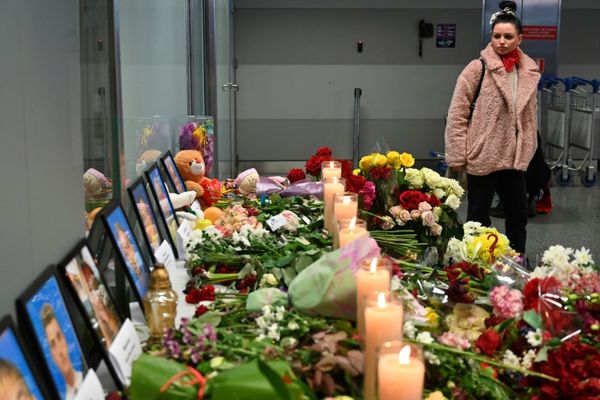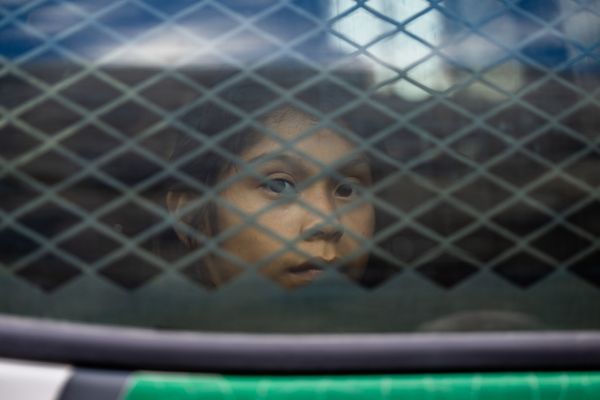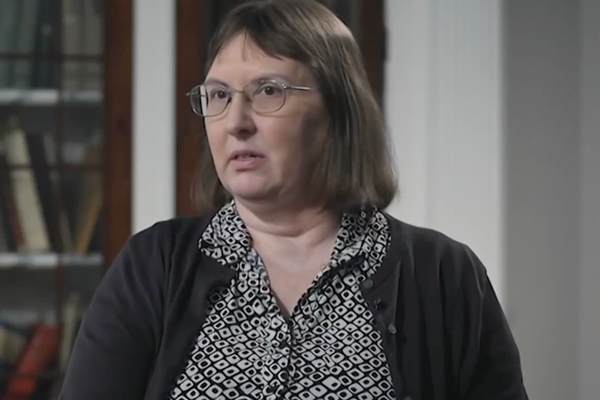
Settling down to watch the finale of Gavin and Stacey on Christmas Day, I felt as if I were stepping into a time machine travelling to the mid-00s. It wasn’t just the familiarity of the characters or the reassuring running gags (what did happen on that fishing trip?) but – with the episode going out at 9pm and not available on streaming beforehand – the knowledge that the nation was enjoying it together.
When we were first introduced to the titular Welsh-English couple back in 2007, a little-known company called Netflix was still five years away from arriving in the UK, while the newly launched BBC iPlayer was creaking on to laptops in Adobe Flash. These were the last glory days of broadcast television before it became largely obsolete, alongside Snow Patrol and low-rise jeans. Then the dawn of streaming arrived, and for the next decade, British viewers went our separate ways: scrolling through a mountain of different services and seeing what increasingly unhinged content the algorithms offered us.
Until this Christmas Day, that is. According to early figures, a whopping 12.5 million people tuned in to find out whether Smithy said “yes” to Nessa. This was the return of the “water-cooler moment”, except rather than chatting at the office, millions of us simultaneously laughed on our sofas while wearing novelty expandable pants.
The BBC’s stellar Christmas lineup means that will have been a common theme this week, with households pausing the merriment/blazing rows (delete as appropriate) to enjoy long-awaited shows live, including Outnumbered and the first new Wallace and Gromit feature film in 16 years. Notably, the BBC has also chosen not to put the EastEnders Christmas, Boxing Day or New Year’s specials on iPlayer before they air.
Britain rarely has these national TV moments any more. Changes in viewing habits and the shift to streaming services mean there are fewer opportunities for shared screen time, outside the occasional summer when England make it to a World Cup finals. Shows that provided some of the biggest cultural impact of recent years – from Squid Game to Bridgerton – were streaming hits built on our own schedules, binged in one weekend or watched months after the zeitgeist demanded. Even the Olympics – previously a guaranteed spot to bring the nation together – have been dampened by the BBC losing rights to Discovery. It feels a very long time since 30 million of us watched Dirty Den hand wife Angie divorce papers on Christmas Day (because it is: it was 1986).
There’s a clear generational divide here: fewer than half of generation Z watch TV on a television, a fall of more than 25 percentage points in just over five years. On top of this, the advent of social media and the rise in working from home has changed the way we talk about popular culture. Nowadays, it’s less dissecting a cliffhanger around a literal water cooler with colleagues and more muting 14 words on X to avoid some bloke you’ve never met spoiling the ending.
And yet the tide appears to be turning, at least partly. The cost of living crisis combined with an oversaturated streaming market caused the number of homes with services such as Netflix and Disney+ to plummet from 2022 – ending a decade of almost uninterrupted growth.
The critically acclaimed series that are exclusive to streaming mean a subscription – or three – is still worthwhile (from 2024, see Only Murders in the Building, The Bear and Baby Reindeer). But the experience feels increasingly frustrating, whether that’s the repeated price hikes, the fact that content is split across multiple platforms, or that it takes 11 minutes to find the “continue watching” tab. Once Amazon Prime put adverts in its shows this year, just like err … television, you had to wonder what exactly the point in paying for streaming was.
It’s no wonder viewers are increasingly nostalgic for the old-fashioned primetime slot. When ITV U-turned and put Gail Platt’s Coronation Street exit on the streaming platform ITVX before it was broadcast on Christmas Day, fans complained it robbed them and veteran actor Helen Worth of “event TV”. The episode was a suitably damp squib: only 2.4 million people tuned in live to see Platt leave the cobbles after 50 years.
Even before Christmas, there had been a gradual return to “event television” during 2024, much of it on terrestrial. Back in January, viewers screamed at their screens as Harry won The Traitors, with the Guardian live blogging the 70-minute special. The successful reboot of Gladiators pulled in 6 million viewers to watch the return of the Travelator live, making it the biggest entertainment launch in the UK for seven years. Just this month, more than 8 million of us watched Chris McCausland lift the glitterball trophy on the live Strictly Come Dancing final.
Meanwhile, some of the best dramas of 2024 have been enjoyed collectively – with the help of some clever scheduling. Rather than putting the whole series on iPlayer at once, the BBC chose to drop only one episode of mega-hits such as Sherwood and Wolf Hall every Sunday – presumably to avoid social media users leaking the fate of Cromwell to viewers who had avoided the spoiler for 500 years.
That ITV broadcast Mr Bates vs the Post Office over several nights in a row helped make it feel as if a miscarriage of justice was being exposed in real time – with the resulting public outage quickly dominoing on to Post Office execs and MPs.
Perhaps I am a massive luddite, but I hope 2025 brings more of this. Whether it’s giving your flatmate running commentary through Doctor Who as if you’re on Gogglebox or guessing the Masked Singer contestants with strangers on Bluesky, television, at its best, is a shared experience. In an increasingly chaotic and divided world, there is something soothing in the simple unity of picking up the remote, turning on your favourite show, and knowing someone, somewhere is doing the same. We may never return to the days of 30 million viewers on Christmas Day but the small joy of “event television” is worth holding on to.
Frances Ryan is a Guardian columnist







